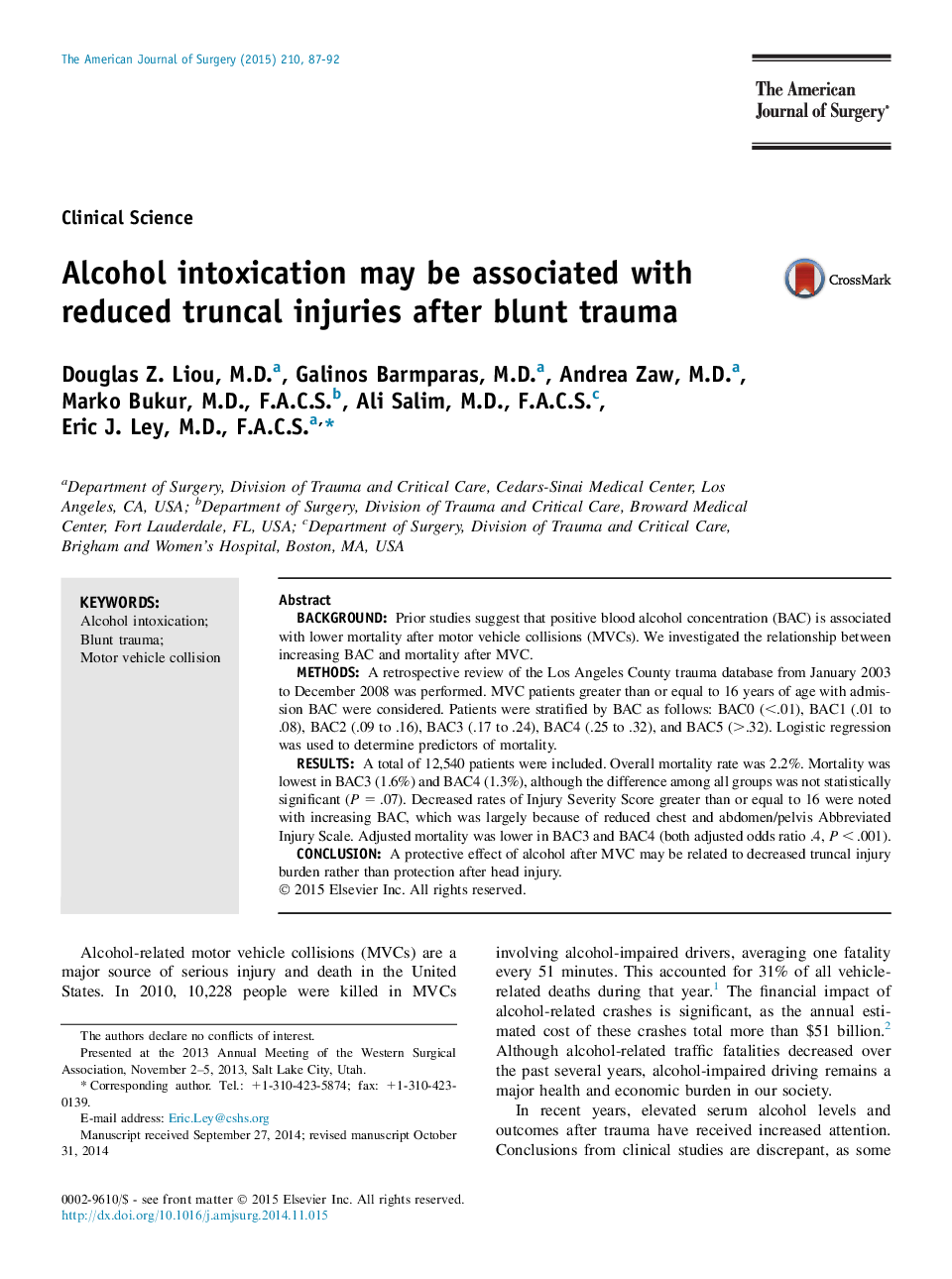| Article ID | Journal | Published Year | Pages | File Type |
|---|---|---|---|---|
| 4278437 | The American Journal of Surgery | 2015 | 6 Pages |
•BAC between 0.17-0.32 g/dL predicts decreased mortality after MVC.•Increasing BAC correlates with lower injury severity to the trunk and extremities.•A protective effect of alcohol after MVC may be related to less truncal injuries.
BackgroundPrior studies suggest that positive blood alcohol concentration (BAC) is associated with lower mortality after motor vehicle collisions (MVCs). We investigated the relationship between increasing BAC and mortality after MVC.MethodsA retrospective review of the Los Angeles County trauma database from January 2003 to December 2008 was performed. MVC patients greater than or equal to 16 years of age with admission BAC were considered. Patients were stratified by BAC as follows: BAC0 (<.01), BAC1 (.01 to .08), BAC2 (.09 to .16), BAC3 (.17 to .24), BAC4 (.25 to .32), and BAC5 (>.32). Logistic regression was used to determine predictors of mortality.ResultsA total of 12,540 patients were included. Overall mortality rate was 2.2%. Mortality was lowest in BAC3 (1.6%) and BAC4 (1.3%), although the difference among all groups was not statistically significant (P = .07). Decreased rates of Injury Severity Score greater than or equal to 16 were noted with increasing BAC, which was largely because of reduced chest and abdomen/pelvis Abbreviated Injury Scale. Adjusted mortality was lower in BAC3 and BAC4 (both adjusted odds ratio .4, P < .001).ConclusionA protective effect of alcohol after MVC may be related to decreased truncal injury burden rather than protection after head injury.
